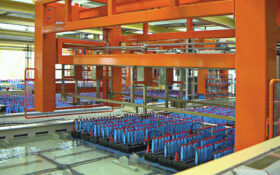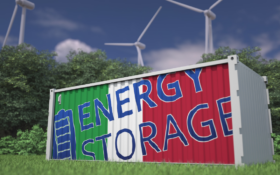A new research base to develop salt-water electrolyte flow cell technology for EVs will be built in Tenero, in the Ticino region of Switzerland.
NanoFlowcell, whose flow cell battery-powered sports car the Quant F boasts a powertrain of 1,075 horsepower, is behind the new ‘Quant City’ research centre.
The Quant F battery has a peak output of 1090 PS/801.69 kW for a limited duration and a maximum rated voltage of 735 V, which has been increased from 600 V in its earlier model, the Quant E.
For normal operations, the Quant F will stand at around 400 V, said Chief Technical Officer Nunxio La Vecchia.
“The enhanced nanoFlowcell continuously feeds over 50 amperes of current into the newly developed buffer system of the Quant F. In turn, this buffer system is briefly able to supply more than 2,000 amperes when needed for full performance,” he said.
“To our knowledge, no one has ever before put a system delivering over 2,000 amperes on the road in a passenger car. We achieve this by combining our flow battery with the new buffer system, and this is unique.”
The battery allows for a more flexible layout due to the separation of the power and energy components and typically has a longer life cycle life, said La Vecchia.
‘Quant City’ is being earmarked as an academy in which scientists and engineers will use virtual reality methods to carry out research and trials of a variety of applications, which could in the future include shipping, aerospace and rail traffic for flow cell batteries.
“Flow cell technology has finally become instilled in the automobile industry’s collective consciousness,” said Prof. Jens Ellermann, President of the Board of Directors of nanoFlowcell AG.












